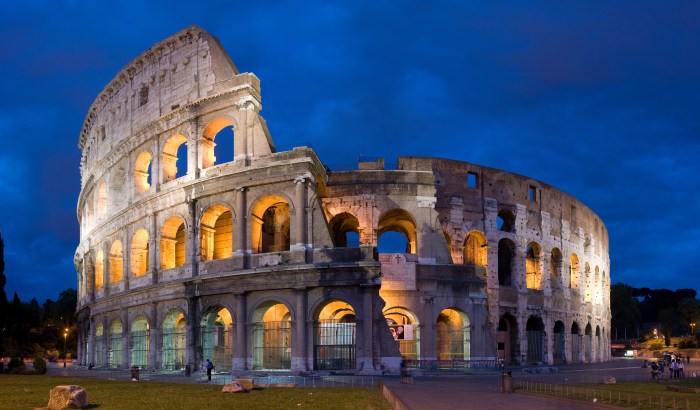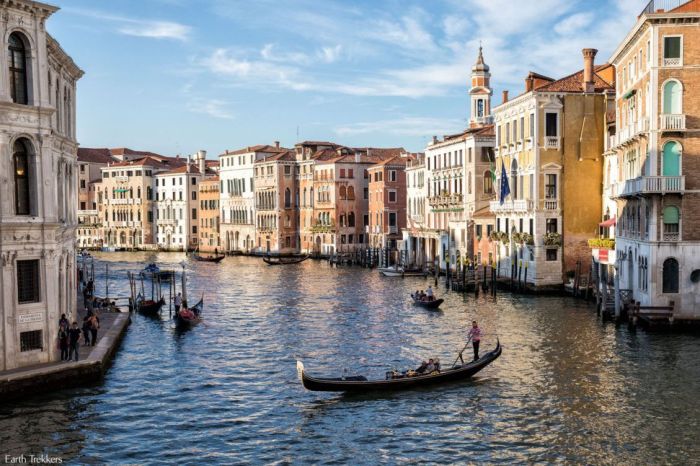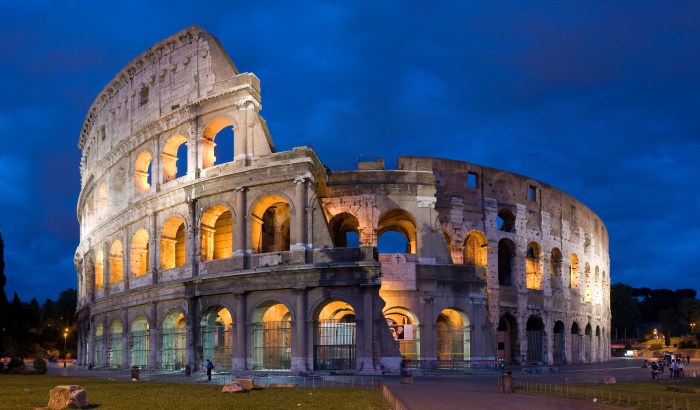Cinque Terre Italy travel promises an unforgettable journey through Italy’s picturesque coastline. Nestled along the Ligurian Riviera, these five vibrant villages offer a captivating blend of history, culture, and stunning natural beauty. From hiking the dramatic trails to indulging in delicious local cuisine, this guide will help you plan the perfect trip to Cinque Terre.
This comprehensive guide explores everything from the best time to visit and transportation options to must-see attractions, local food and drink, accommodation choices, and essential tips for a smooth and memorable experience. Discover the unique charm of each village and embrace the spirit of sustainable tourism in Cinque Terre.
Introduction to Cinque Terre
Cinque Terre, a breathtaking stretch of rugged coastline in Liguria, Italy, captivates travelers with its picturesque villages clinging to cliffs overlooking the Ligurian Sea. This UNESCO World Heritage Site boasts a unique blend of natural beauty, vibrant culture, and delicious cuisine, making it a truly unforgettable destination. From the colorful houses painted on the hillside to the terraced vineyards clinging to the slopes, Cinque Terre evokes a sense of timeless charm.The region’s rich history intertwines with its dramatic landscape, shaping the lives and traditions of its inhabitants for centuries.
This historical context, coupled with the distinct cultural heritage of the villages, creates a profound and immersive experience for visitors. The geographical features, including the dramatic cliffs, the sparkling sea, and the terraced vineyards, have played a vital role in the region’s development and have created a unique and visually stunning environment.
Key Destinations in Cinque Terre
| Village | Description |
|---|---|
| Monterosso al Mare | The largest of the five villages, Monterosso offers a wider selection of accommodations and amenities, including sandy beaches. Its vibrant atmosphere and lively atmosphere make it a popular choice for families and those seeking a more relaxed pace. |
| Vernazza | Known for its picturesque harbor and charming narrow streets, Vernazza is often considered the most beautiful village in Cinque Terre. The village’s unique position, nestled between two dramatic cliffs, offers breathtaking views of the coastline. |
| Corniglia | Nestled in the middle of the five villages, Corniglia is the only one not directly on the coast. To reach it, visitors must climb a steep staircase, offering a rewarding view of the surrounding area. |
| Manarola | Known for its iconic, colorful houses clustered around the harbor, Manarola presents a postcard-perfect image of Cinque Terre. The village’s proximity to the sea and the surrounding vineyards makes it a popular spot for hiking and enjoying the fresh Ligurian air. |
| Riomaggiore | The southernmost village, Riomaggiore, boasts a long history and a vibrant atmosphere. The village’s picturesque setting, with its colorful houses descending towards the sea, provides a stunning backdrop to the Ligurian scenery. |
Historical Significance of Cinque Terre
The villages of Cinque Terre have a long history, dating back to the Roman period. Over the centuries, the inhabitants have adapted to the challenging geography, creating a unique culture deeply rooted in fishing, agriculture, and trade. The terraced vineyards, meticulously cultivated for centuries, showcase the determination and ingenuity of the people who have lived and worked the land.
This historical context underscores the region’s enduring appeal and the importance of preserving its cultural heritage.
Cultural Aspects of Cinque Terre
The culture of Cinque Terre is deeply intertwined with its geography and history. The villages maintain a strong sense of community, with traditions and customs passed down through generations. The vibrant colors of the houses, the aromas of the local cuisine, and the passionate pursuit of craftsmanship highlight the unique character of this area. The local cuisine, often featuring fresh seafood, local produce, and regional wines, further enriches the cultural experience.
This strong cultural identity makes Cinque Terre a captivating destination for those seeking authentic experiences.
Geographical Features and Landscapes
The dramatic Ligurian coastline, with its steep cliffs and rocky shores, forms the backdrop for the five villages. The terraced vineyards, clinging to the slopes, are a testament to the region’s resilience and its people’s ingenuity in adapting to the challenging environment. The breathtaking views of the coastline, with its picturesque harbors and colorful houses, create an unforgettable panorama.
The proximity of the sea and the surrounding hills provide ample opportunities for hiking and exploring the stunning landscapes. These geographical features contribute significantly to the area’s allure and charm.
Travel Planning for Cinque Terre
Cinque Terre, a breathtaking cluster of five colorful villages clinging to the Ligurian coast, is a dream destination for many. Planning your trip requires careful consideration of various factors, from the best time to visit to the most convenient transportation options. This section delves into the essential aspects of travel planning, ensuring you have a smooth and unforgettable experience.Careful planning ensures a smoother trip, avoiding potential pitfalls and maximizing your enjoyment of the stunning Cinque Terre landscape.
This section will provide you with crucial insights into optimizing your trip, whether you’re a seasoned traveler or a first-time visitor.
Best Time to Visit
The ideal time to visit Cinque Terre for pleasant weather and fewer crowds is typically from May to June or September to October. These shoulder seasons offer pleasant temperatures, fewer tourists, and fewer booking difficulties, making them a great choice for those seeking a more relaxed and authentic experience. Summer months (July and August) are very popular, but also experience higher prices and more crowds.
Transportation Options
Cinque Terre offers various transportation options, both within the villages and from major cities. The most convenient way to move between the villages is by train. The train network connects all five villages, offering a scenic and efficient way to explore the area. For those seeking a more immersive experience, hiking trails wind through the landscape, connecting the villages and offering breathtaking views.
- Train: The train is the most efficient and scenic way to travel between the villages. It’s a frequent service and provides a great overview of the region. It’s also the most convenient option for those traveling from major cities such as La Spezia or Genoa.
- Hiking: Numerous trails connect the villages, offering stunning views and a unique way to experience the area. Hiking can be strenuous, especially in hot weather, but it provides an unparalleled perspective. This is a great option for those seeking a more active vacation.
- Ferry: A ferry service operates along the coast, providing a water-based alternative to the train. The ferry offers a tranquil way to travel, and it can be particularly useful for those who want to avoid the crowds on the train during peak season.
From major cities like Milan, Florence, and Pisa, the easiest access is via train to La Spezia, the main transport hub. From there, trains connect directly to the villages.
Accommodation Options
Cinque Terre offers a range of accommodations to suit various budgets and preferences. Budget-friendly options include hostels and guesthouses, providing basic necessities at reasonable prices. Mid-range hotels and apartments offer a comfortable stay with amenities. Luxury options include boutique hotels and villas, providing a truly indulgent experience.
- Budget-Friendly: Hostels and guesthouses offer a more affordable way to stay, often providing a communal experience.
- Mid-Range: Hotels and apartments offer a balance between comfort and affordability, providing a range of amenities and services.
- Luxury: Boutique hotels and villas provide a truly luxurious experience, with personalized service and premium amenities.
Travel Styles
Cinque Terre caters to various travel styles, from solo adventurers to families. Solo travelers can enjoy the freedom of exploration, couples can savor romantic moments, and families can create lasting memories.
- Solo Travelers: Solo travelers can easily explore at their own pace, choosing activities and sights that appeal to them.
- Couples: Cinque Terre provides romantic settings for couples to enjoy their time together, from scenic hikes to cozy dinners.
- Families: The villages are designed for families with young children, offering playgrounds and areas for relaxation. Families can enjoy a variety of activities, from hiking to exploring the local markets.
Comparison of Travel Methods
| Travel Method | Pros | Cons |
|---|---|---|
| Train | Efficient, Scenic, Frequent Service | Can be crowded during peak season, Limited flexibility |
| Hiking | Immersive, Stunning Views, Active | Strenuous, Time-consuming, Weather Dependent |
| Ferry | Tranquil, Scenic, Alternative to Crowds | Less frequent, May not reach all villages, Can be affected by weather |
Activities and Experiences

Cinque Terre offers a vibrant tapestry of experiences, catering to diverse interests. From the thrill of hiking scenic trails to the serenity of swimming in the crystal-clear waters, there’s something for everyone. Delving deeper into the region’s culture through food tours, wine tastings, and local workshops allows visitors to connect with the heart of the Ligurian experience. This section will highlight popular activities, must-see attractions, and cultural immersion opportunities, providing a comprehensive guide to maximizing your Cinque Terre adventure.Exploring Cinque Terre goes beyond simply sightseeing; it’s about engaging with the local lifestyle and appreciating the unique beauty of each village.
Cinque Terre in Italy is a breathtaking place to visit, with its colorful villages clinging to the cliffs. While planning your Italian adventure, it’s worth considering the impact of natural disasters, like the recent hurricanes affecting tourist destinations like the Bahamas. Checking out resources like the bahamas visitors hurricane affected areas can help you understand the current situation and ensure your trip to Cinque Terre is both enjoyable and responsible.
Luckily, Cinque Terre hasn’t been directly impacted, so you can still revel in the stunning scenery and delicious food.
This section details various activities to ensure you have a well-rounded experience, considering diverse interests and preferences.
Popular Activities and Excursions
Cinque Terre boasts a range of activities, from relaxing beach days to challenging hikes. Popular excursions include boat tours along the coastline, offering breathtaking views of the colorful villages nestled amongst the cliffs. These excursions provide a unique perspective, complementing land-based explorations.
Must-See Attractions
Cinque Terre’s allure stems from its stunning landscapes and historical charm. The five villages, each with its own distinct personality, are must-sees. Famous trails like the Sentiero Azzurro, connecting the villages, offer unforgettable hiking experiences. Key viewpoints, like those overlooking Manarola or Corniglia, provide panoramic vistas. These landmarks and viewpoints provide a glimpse into the region’s rich history and breathtaking beauty.
Experiencing Local Culture
Immerse yourself in the local culture through curated food tours, exploring the regional cuisine. Wine tastings at local vineyards provide insights into the area’s winemaking traditions. Workshops focused on pottery, artisan crafts, or Ligurian cooking offer opportunities to engage directly with the local community and create lasting memories.
Hiking Trails Comparison
| Trail Name | Difficulty | Scenic Views | Highlights |
|---|---|---|---|
| Sentiero Azzurro (part of it) | Moderate | Stunning coastal views, glimpses of the villages | Connects most villages, good for a moderate hike |
| Via dell’Amore | Easy | Romantic views of the coastline, short distance | Famous for its beauty, closed in some sections, but can be accessed through other trails |
| Trail from Monterosso to Vernazza | Moderate-Difficult | Varied views from vineyards to coastal cliffs | A longer hike with rewarding vistas |
This table provides a concise comparison of popular hiking trails in Cinque Terre, highlighting the difficulty level and scenic views for each trail. This allows visitors to select trails based on their preferred level of physical exertion and desired visual experiences.
Swimming and Relaxation
Cinque Terre’s beaches, though small, are perfect for relaxing swims and sunbathing. The clear waters invite visitors to enjoy the Mediterranean sun and embrace the local atmosphere. Each village has its own beach area, with some offering more space than others. Enjoy the unique charm of each village’s beach scene.
Exploring the Villages
Each village in Cinque Terre offers unique experiences. Monterosso al Mare, the largest village, boasts sandy beaches, while Corniglia, situated atop a hill, offers a more secluded ambiance. Manarola’s colorful houses cling to the cliffs, providing a postcard-perfect image. Vernazza, with its harbor and historic architecture, offers a mix of tranquility and bustling activity. Riomaggiore, with its charming streets and terraced vineyards, showcases the region’s agricultural heritage.
Taking time to explore each village’s character and history will deepen your understanding of the region.
Food and Drink in Cinque Terre

Cinque Terre’s culinary scene is as captivating as its breathtaking landscapes. The region’s unique terroir, nestled between the Ligurian Sea and the rugged mountains, has fostered a vibrant tradition of fresh, flavorful food and wine. From the sun-drenched vineyards to the bustling local markets, the essence of Italian gastronomy is deeply woven into the fabric of Cinque Terre.The cuisine of Cinque Terre is heavily influenced by the availability of local ingredients.
Seafood plays a prominent role, with fresh catches like anchovies, sardines, and mussels featuring prominently in many dishes. The abundance of olives and herbs, cultivated in the terraced hillsides, contribute distinctive flavors to both savory and sweet preparations. The region’s proximity to the sea also makes it a haven for pasta dishes featuring fresh seafood, often paired with simple sauces made from local herbs and olive oil.
Regional Cuisine and Ingredients, Cinque terre italy travel
The region’s cuisine is characterized by its simplicity and use of high-quality, locally sourced ingredients. Fresh seafood, vibrant vegetables, and aromatic herbs are fundamental elements. The terraced vineyards produce a variety of wines that perfectly complement the local dishes. The cuisine reflects the region’s strong connection to the sea and the mountainside.
Traditional Dishes and Specialties
Many traditional dishes showcase the region’s bounty. One of the most iconic dishes is
- trofie al pesto*, a pasta dish featuring fresh pesto made with basil, pine nuts, garlic, and Parmesan cheese. Other popular specialties include
- fritto misto*, a selection of fried seafood, and
- torta al formaggio*, a rich cheese cake. The use of fresh seafood is particularly prevalent in the dishes of Cinque Terre, with grilled fish, seafood stews, and pasta dishes featuring fresh catches.
Restaurants, Cafes, and Food Markets
Cinque Terre offers a wide range of dining experiences, from casual cafes serving fresh pastries and coffee to elegant restaurants showcasing the region’s culinary traditions. Local markets, particularly in the villages, are vibrant hubs of activity, offering a glimpse into the daily life of the locals and an opportunity to sample fresh produce and local delicacies. Many restaurants are family-run establishments, passing down generations of culinary knowledge and expertise.
Local Wine Production
Cinque Terre is renowned for its wine production, particularly the Sciacchetrà, a sweet dessert wine made from dried grapes. The terraced vineyards, clinging to the hillsides, are testament to the region’s dedication to winemaking. The unique microclimate and soil composition contribute to the distinctive flavors of the wines. Local wine bars and restaurants often feature a selection of Cinque Terre wines, allowing visitors to savor the region’s wine culture.
Recommended Restaurants and Cafes
| Cuisine | Restaurant/Cafe | Price Range |
|---|---|---|
| Seafood | Ristorante La Capannina | Mid-range |
| Seafood | Trattoria dal Billy | Mid-range |
| Seafood/Italian | Ristorante Belforte | Mid-range |
| Pesto | Pesto Bar | Budget-friendly |
| Local specialties | Ristorante Trattoria | Mid-range |
| Cafes | Caffè del Porto | Budget-friendly |
Note: Price ranges are approximate and may vary depending on the season and specific menu choices. This is not an exhaustive list, and many other excellent restaurants and cafes exist throughout Cinque Terre.
Accommodation Options and Budget
Cinque Terre offers a wide array of accommodation options to suit every budget and preference. From cozy guesthouses to luxurious hotels, you’re sure to find a place to rest your head after exploring the charming villages. Understanding the different price points and available choices is key to planning a financially sound trip.Choosing the right accommodation plays a significant role in your Cinque Terre experience.
It impacts your daily travel, proximity to attractions, and overall enjoyment. Consider your budget and desired level of comfort when making your selection.
Budget-Friendly Options
Budget-friendly options, like hostels and guesthouses, are ideal for those seeking affordable lodging. These accommodations often provide a vibrant atmosphere and opportunities to connect with fellow travelers.
- Hostels offer dorm rooms and private rooms at competitive rates. Many hostels in Cinque Terre are located near train stations or in the villages, making them convenient for exploring the region.
- Guesthouses are another budget-friendly alternative. They typically offer basic rooms with private or shared bathrooms. These options provide a more personalized touch compared to hostels, often with friendly hosts and local recommendations.
Mid-Range Accommodations
Mid-range accommodations offer a balance between budget and luxury. This category includes charming hotels, boutique hotels, and apartments.
- Hotels in this price range often provide comfortable rooms, good amenities, and convenient locations. Look for hotels with shared pools or terraces to enhance your experience.
- Apartments or vacation rentals offer more space and kitchen facilities, providing an opportunity for self-catering and flexibility. This option can be a good choice for families or groups.
Luxury Stays
For a truly unforgettable experience, consider luxury hotels and villas. These accommodations often provide exceptional amenities, impeccable service, and breathtaking views.
- Luxury hotels in Cinque Terre frequently boast stunning sea views, gourmet restaurants, and spa facilities. These hotels often provide personalized service and a high level of comfort.
- Villas offer a more private and exclusive experience. These accommodations usually feature multiple bedrooms, living areas, and outdoor spaces. This option is ideal for larger groups or families seeking more privacy.
Accommodation Cost Comparison
The cost of accommodation varies significantly depending on the type of lodging and the time of year. This table provides a general overview of average costs for different accommodation types. Keep in mind that these are estimates and actual prices can fluctuate.
| Accommodation Type | Average Cost (per night) |
|---|---|
| Hostel Dorm Room | €20-€40 |
| Hostel Private Room | €50-€80 |
| Guesthouse | €50-€100 |
| Mid-Range Hotel | €100-€200 |
| Luxury Hotel | €200+ |
| Apartment/Rental | €100-€300+ |
Saving Money on Accommodation and Tours
There are several ways to save money on accommodation and tours.
- Traveling during the shoulder season (spring or fall) can significantly reduce prices compared to peak summer months.
- Booking accommodations and tours in advance can often secure better deals.
- Consider alternative transportation options, like the train, to reduce costs associated with taxis or private vehicles.
- Look for discounts or deals offered by hotels or tour operators. Checking online travel agencies can reveal discounts.
Recommended Hotels and Guesthouses
Several excellent hotels and guesthouses offer a memorable Cinque Terre experience.
Cinque Terre in Italy is absolutely stunning, with its colorful houses clinging to the cliffs. Thinking about how I squeezed in so many incredible destinations, like Cinque Terre, during my whirlwind European adventure, I was reminded of my experience with 25 countries in 2 5 years how I made the most of a new job in Europe.
The hiking trails and breathtaking views definitely made it worthwhile. It’s a place I’d recommend to anyone looking for a truly unforgettable Italian experience.
- Hotel La Torretta (luxury): Offers stunning views, excellent service, and a gourmet restaurant.
- Il Saraceno (mid-range): Located in Monterosso, known for its comfortable rooms and close proximity to the beach.
- Casa Maria (guesthouse): Offers a warm and welcoming atmosphere with comfortable rooms and local recommendations.
Essential Tips for Cinque Terre Travelers
Cinque Terre, with its breathtaking coastal villages clinging to the Ligurian cliffs, is a dream destination for many. However, meticulous planning is key to a truly enjoyable trip. Understanding the nuances of travel in this unique region will ensure a smoother and more memorable experience.Navigating Cinque Terre effectively requires a blend of preparation and adaptability. From understanding visa requirements to packing for varied weather, and learning essential phrases, these tips will equip you for a successful adventure.
Knowing how to stay safe and avoid common pitfalls will make your journey even more rewarding.
Visa Requirements and Necessary Documents
Visa requirements for Cinque Terre depend on your nationality. Thorough research on the official Italian embassy website or consulate is crucial for determining the specific visa needed. This will often include a passport valid for at least six months beyond your intended stay. It’s advisable to have copies of essential documents, including your passport, visa (if required), and travel insurance, in addition to the original documents.
Keep these copies separate from the originals for added security.
Planning a Cinque Terre Italy trip? You’ll be doing a lot of walking, so finding the perfect shoes is key. For Dad, consider these top-rated comfy walking shoes on Amazon for Father’s Day. best comfy walking shoes amazon fathers day They’ll make exploring the colorful villages and breathtaking coastal paths so much more enjoyable, ensuring your Cinque Terre adventure is as relaxing as it is unforgettable.
Packing Essentials for Different Weather Conditions
Cinque Terre’s weather can be unpredictable. Layers are your best friend. Pack light, quick-drying clothing in neutral colors, suitable for both warm sunny days and cooler evenings. Don’t forget rain gear, as showers can occur unexpectedly. Comfortable walking shoes are a must, as you’ll be doing a lot of exploring on foot.
Consider packing light, foldable hiking poles for added stability on uneven terrain. Sun protection, including sunscreen, a hat, and sunglasses, is crucial, even on cloudy days.
Useful Phrases in Italian
Learning a few basic Italian phrases can significantly enhance your interactions with the locals. A simple “Buongiorno” (good morning) or “Grazie” (thank you) can go a long way. Knowing how to ask for directions (“Scusi, come posso arrivare a…?”), order food (“Vorrei un caffè, per favore”), and express gratitude will be invaluable. Memorizing phrases like “Prego” (you’re welcome) and “Arrivederci” (goodbye) will complete your repertoire.
“Buongiorno, grazie mille!”
Staying Safe and Avoiding Common Pitfalls
Cinque Terre is generally safe, but taking precautions is always advisable. Be aware of your surroundings, especially in crowded areas. Keep valuables secure and avoid displaying large amounts of cash. Inform someone of your itinerary and expected return time. Always be mindful of the uneven terrain and take necessary precautions while hiking.
Be sure to plan your travel in advance to avoid issues with overcrowding, especially during peak season. Check the ferry schedules and train times to avoid unexpected delays.
Essential Items to Pack
| Category | Essential Items |
|---|---|
| Documents | Passport, visa (if required), travel insurance, copies of documents |
| Clothing | Layers of quick-drying clothing, comfortable walking shoes, rain gear, sun protection (sunscreen, hat, sunglasses), swimwear |
| Accessories | Foldable hiking poles (optional), reusable water bottle, small backpack, first-aid kit, basic toiletries |
| Electronics | Phone, charger, camera, and any necessary adapters |
| Food & Drink | Snacks, water bottle |
Exploring Cinque Terre Villages
Cinque Terre, a breathtaking stretch of Ligurian coastline, boasts five charming villages clinging to the rugged hillsides. Each village possesses a unique character, reflecting its history and location. From the bustling markets of Vernazza to the secluded beaches of Monterosso, exploring these villages is an essential part of experiencing the true essence of Cinque Terre.These villages, though interconnected by trails and easily accessible by train, each maintain their distinct identities.
Understanding these differences is key to tailoring your Cinque Terre adventure to your specific interests. Whether you crave vibrant nightlife, tranquil beaches, or historic charm, one of these villages is sure to captivate you.
Monterosso al Mare
Monterosso, the largest of the five villages, offers a diverse range of experiences. It’s a popular choice for those seeking a more developed tourist area, with a wider selection of hotels, restaurants, and shops. The village is divided into two parts, the historic center and the newer, more built-up area.
- Beaches: Monterosso boasts several beautiful beaches, including the popular Spiaggia del Fegina, known for its long stretches of sand and lively atmosphere. Other smaller, cozier beaches are tucked away in the historic center, offering a more secluded experience.
- Activities: Beyond the beaches, Monterosso offers opportunities for swimming, sunbathing, hiking, and exploring the historic center. There are also various water sports activities available, and boat tours often depart from the harbor.
- Atmosphere: Monterosso is generally perceived as the most touristy of the five villages, providing a wide array of services and amenities. It often feels more urban than the others, with a bustling atmosphere, especially during peak season.
Vernazza
Vernazza, often lauded as the most picturesque village, is a stunning example of a traditional Ligurian village. Its colorful houses clinging to the cliff face, and the picturesque harbor are captivating. Vernazza is known for its charming atmosphere and well-preserved historic architecture.
- Attractions: Vernazza’s harbor is a focal point, offering opportunities for boat trips, fishing, and simply enjoying the ambiance. The Doria Castle, perched high above the village, provides panoramic views.
- Activities: The village itself is a delight to wander through, with numerous trattorias, cafes, and souvenir shops. Hiking trails connect Vernazza to the other villages, allowing for exploration of the surrounding landscape.
- Atmosphere: Vernazza exudes an authentic, almost timeless quality. Its narrow streets and winding pathways create a sense of intimacy, often contrasted with the vibrant atmosphere of the harbor.
Corniglia
Corniglia stands out as the only village not directly situated on the sea. Perched atop a hill, it offers stunning views of the surrounding coastline. Its higher elevation often leads to a quieter and more peaceful experience.
- Attractions: Corniglia’s unique position provides spectacular views of the coastline and the other villages. Its hilltop location provides a different perspective on Cinque Terre.
- Activities: Hiking is a prominent activity, with well-maintained trails connecting Corniglia to the other villages. The village itself offers a selection of local restaurants and shops.
- Atmosphere: Corniglia’s elevation gives it a distinct atmosphere, often quieter and more serene than the other villages. The views from its vantage point are unmatched.
Manarola
Manarola is renowned for its beautiful harbor and the breathtaking views of the coastline. Its tight-knit community and vibrant atmosphere create a captivating experience.
- Attractions: Manarola’s harbor, with its colorful boats, is a highlight. The village is also known for its excellent seafood restaurants.
- Activities: The village’s narrow streets are perfect for exploring. The surrounding trails offer scenic hiking options, connecting Manarola to the other villages.
- Atmosphere: Manarola exudes a lively, yet intimate charm. The close proximity of buildings and the vibrancy of the harbor create a unique ambiance.
Riomaggiore
Riomaggiore, the southernmost village, boasts a rich history and a vibrant atmosphere. Its position at the end of the Cinque Terre trail offers a different perspective.
- Attractions: Riomaggiore’s harbor is a central gathering point. The village also features a beautiful church and several historic buildings.
- Activities: The village offers a wide range of restaurants and shops. The famous Sentiero Azzurro trail, connecting the villages, starts from Riomaggiore.
- Atmosphere: Riomaggiore is often described as having a lively and bustling atmosphere, particularly in the evening, with a strong sense of community.
Comparative Overview
| Village | Size | Atmosphere | Attractions |
|---|---|---|---|
| Monterosso | Large | Bustling, Touristy | Beaches, shops, water sports |
| Vernazza | Medium | Picturesque, Charming | Harbor, Doria Castle, hiking |
| Corniglia | Small | Quiet, Serene | Views, hiking trails |
| Manarola | Medium | Lively, Intimate | Harbor, seafood restaurants |
| Riomaggiore | Medium | Lively, Bustling | Harbor, church, hiking trails |
Sustainable Tourism in Cinque Terre: Cinque Terre Italy Travel
Cinque Terre, with its breathtaking landscapes and charming villages, is a treasure worth preserving. Sustainable tourism plays a crucial role in ensuring this beauty endures for future generations. Responsible travel practices not only protect the environment but also respect the local culture and economy. This approach fosters a more meaningful and enriching experience for visitors while safeguarding the unique character of the region.Understanding the delicate balance between tourism and environmental protection is vital for the long-term health of Cinque Terre.
By adopting sustainable practices, visitors can contribute to the preservation of the region’s natural beauty, cultural heritage, and local communities. This commitment extends beyond individual actions and involves a collective responsibility shared by both travelers and the local authorities.
Importance of Eco-Friendly Accommodations
Choosing eco-friendly accommodations is a direct way to minimize your environmental footprint. These establishments often prioritize energy efficiency, water conservation, and waste reduction. They frequently utilize renewable energy sources and employ sustainable building materials. Selecting such lodgings directly supports businesses dedicated to environmental responsibility, contributing to a healthier ecosystem. For instance, hotels utilizing solar panels or employing rainwater harvesting systems demonstrate a commitment to sustainability.
Eco-Friendly Activities and Experiences
Participating in eco-friendly activities directly supports the preservation of Cinque Terre’s natural beauty and cultural heritage. Hike the trails, exploring the villages on foot, is an excellent way to experience the region while minimizing transportation emissions. Consider joining guided tours that emphasize environmental awareness and respect for local customs. Alternatively, opting for boat tours that prioritize responsible practices and limit vessel size demonstrates a commitment to environmental protection.
Responsible Travel Practices
Minimizing your environmental impact involves several responsible travel practices. Firstly, pack light to reduce the amount of waste produced. Carry reusable water bottles, shopping bags, and food containers. Choose locally sourced food and drinks to support local farmers and producers, minimizing transportation distances and emissions. Respecting local customs and traditions, avoiding littering, and properly disposing of waste are essential components of responsible travel.
Support local businesses and artisans, which directly strengthens the local economy.
Eco-Friendly Transportation Options
Sustainable transportation within Cinque Terre is essential for minimizing your environmental impact. Walking is the most environmentally friendly option, allowing you to fully appreciate the scenery and reducing emissions. The train system provides a convenient and efficient alternative, offering a low-carbon method of traversing the region. For instance, the Cinque Terre Express train line connects the villages, facilitating efficient travel while minimizing environmental harm.
Alternatively, renting bicycles can be an enjoyable and sustainable way to explore the region’s picturesque landscapes.
| Transportation Mode | Environmental Impact | Recommendation |
|---|---|---|
| Walking | Low | Ideal for appreciating the views and minimizing emissions. |
| Train (Cinque Terre Express) | Medium | Efficient and convenient; reduces reliance on individual vehicles. |
| Bicycle Rental | Low | Enjoyable way to explore the region’s scenic paths. |
| Boat (limited use) | Medium-High (depending on size and practices) | Consider responsible boat tours prioritizing environmental protection. |
| Car | High | Avoid using a car unless absolutely necessary. Parking can be challenging and expensive. |
Closing Summary
In conclusion, Cinque Terre Italy travel is more than just a vacation; it’s an immersion into a captivating Italian experience. By meticulously planning your trip, from the optimal time to visit to choosing the perfect accommodations, you can maximize your enjoyment and create lasting memories. This guide provides all the necessary information to craft your dream Cinque Terre adventure.
Embrace the beauty, savor the flavors, and immerse yourself in the authentic charm of this breathtaking region.


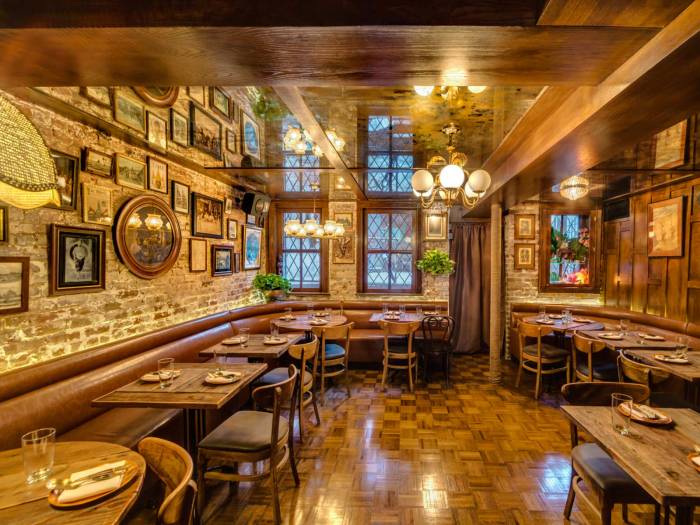

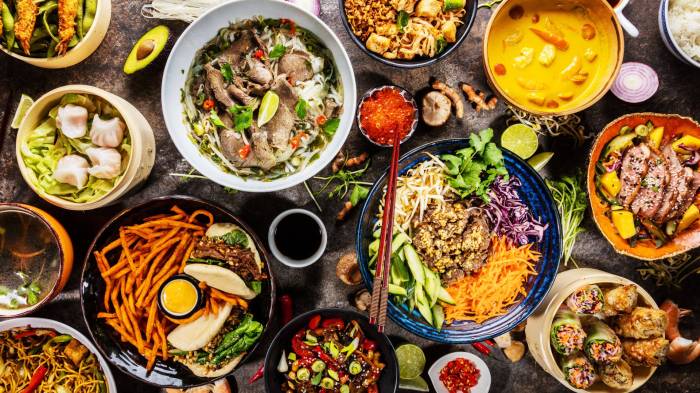

![[100+] Food 4k Wallpapers | Wallpapers.com Food drink what to do and eat in genoa](https://travelingtours.info/wp-content/uploads/2025/06/food-4k-spdnpz7bhmx4kv2r-1.jpg)






